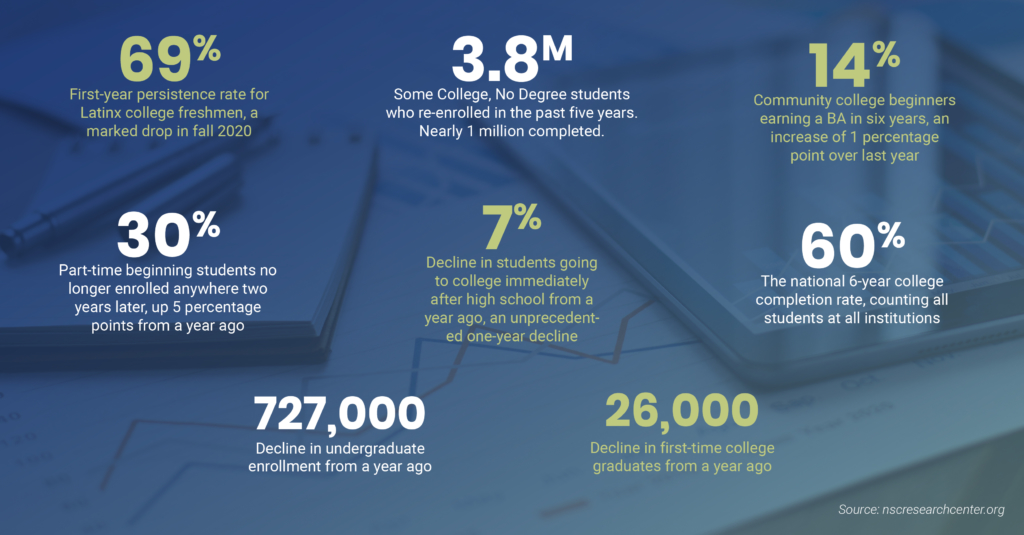FAFSA Completion Rate Declines for High School Class of 2021
A report by the National College Attainment Network shows that the Free Application for Federal Student Aid (FAFSA) completion rate for the high school class of 2021 was 4.8 percent lower than the previous year’s class. Students must complete the FAFSA to access federal grants and loans as well as many types of state and institutional financial aid. Some key findings:
- Among Title I-eligible public high schools, which enroll higher proportions of students from low-income backgrounds, FAFSA completions declined 6.5 percent compared to 3.7 percent for non-Title I-eligible public high schools.
- For schools with more than 50 percent Black and Latinx students, the decline was 8.1 percent compared to 2.2 percent in schools with less Black and Hispanic enrollment.
- Public high schools in cities (-6.6 percent) and small towns (-7 percent) declined the most, followed by rural (-5.5 percent) and suburban high schools (-4.2 percent).
Source: Inside Higher Ed
Improving Transfer Pathways
The Council of Independent Colleges, which represents more than 750 private nonprofit schools and higher education organizations, is launching a consortium of Ohio institutions aiming to improve transfer pathways into the liberal arts. Composed of 14 private colleges and 10 community colleges, the program will create three transfer pathways to bachelor’s degrees in English, psychology and biology. It’s one of several recent efforts from liberal arts colleges to recruit more transfer students amid challenging demographic trends. One Iowa college made a transfer agreement with all 15 community colleges in the state, for example. And another four-year college in the state built its own two-year school. “Transfer enrollment is really important. About 40% of students who start in college are enrolling in community colleges. And most of them — around 80% — think they’re going on for a bachelor’s degree when they first start. But in truth, maybe one in six will finish their bachelor’s degree in six years, which is about the time you would expect the student who is at a community college to finish a bachelor’s degree if there’s any continuity at all,” explained Winnie Gerhardt, the project’s director.
Source: Higher Ed Dive
Use of Digital Campus Tours on the Rise
Digital campus tours are becoming more common as a powerful way to communicate a university’s value or the vibrancy of its campus life. Institutions such as the University of North Texas have implemented the to offer fully immersive, 360-degree-view digital campus tours to prospective students, faculty, and others. The University of Massachusetts Lowell hosts virtual welcome days for students to learn about their majors, internships, research opportunities and other interest-specific information. Many other schools are beginning to follow suit. According to consulting firm Entangled Solutions, more than 200 schools have added senior executives whose titles include the words “digital’ or “innovation” – a signal that higher education’s digital revolution is already under way. There are several benefits of using these digital tools:
- They can be adapted to fit most recruiting needs and attuned to virtually any prospect, from top engineering minds to leadership and top-tier professors.
- Digital campus tours offer unmatched reach and control, including consistent messaging.
Source: eCampus News
Higher Ed by the Numbers

Source: National Student Clearinghouse Research Center
